‘Superman: The Space Age’: a more intimate and philosophical look at the man behind the cape
Mark Russell and Michael Allred have created a work that not only revisits the Superman myth, but also confronts him with his deepest fears.
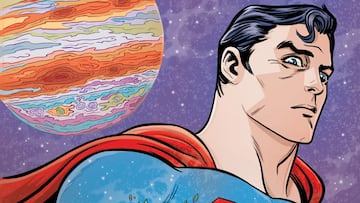
The best superhero stories aren’t always written within the official continuity. Sometimes, the most powerful stories emerge when authors break free from narrative constraints to propose their own vision. Superman: The Space Age falls into that tradition. Mark Russell starts with a premise as powerful as it is unsettling: how would Superman behave if he knew that Earth and he himself would disappear in 20 years?
From that idea, the screenwriter constructs a story that revisits familiar tropes of the character, but does so from a more intimate and philosophical perspective. This Superman isn’t afraid of dying; he’s afraid of what he might become to avoid it.
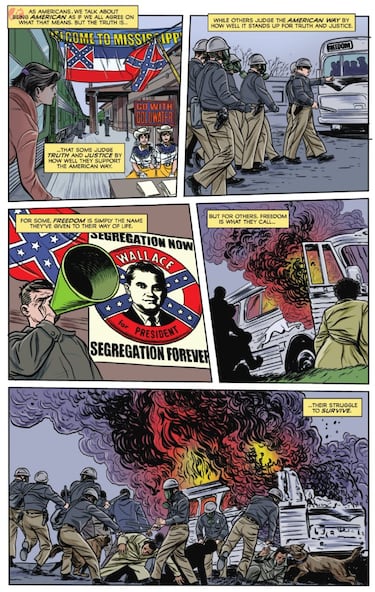
Superman in US history
The story begins in 1963 in Smallville. Clark Kent is a young man aware of his powers, but still unaware of their origin and purpose. The historical context is key: the struggle for civil rights and the threat of nuclear war with the USSR set the tone of the narrative. Russell doesn’t simply list historical events like the Kennedy assassination, the Watergate scandal, or the Vietnam War; he integrates them into the plot and connects them to social issues: real estate speculation, prostitution, police corruption…
Superman doesn’t just save the world: he observes it, questions it, and gets involved in its most human contradictions.
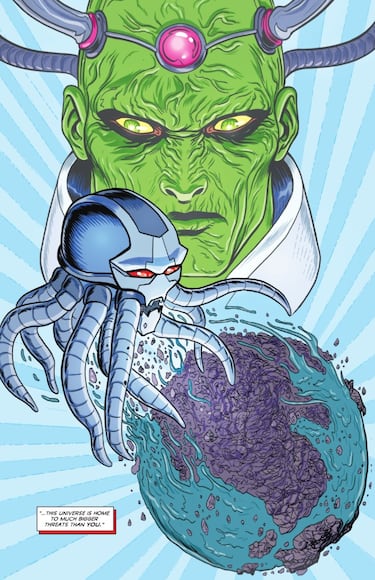
The villains
One of the narrative pillars of this comic is its ability to intertwine the protagonist’s personal conflict with a cosmic threat of epic proportions. Throughout the 22 years the story spans, Russell introduces two pivotal villains into the Man of Steel’s mythology: Lex Luthor and Brainiac.
Luthor represents, as always, the ideological antithesis of Superman. He is not only a physical enemy, but a symbol of cynicism, unbridled ambition, and unethical pragmatism. In this version, his conflict with Bruce Wayne extends to the economic and political spheres, making him a figure who manipulates the system from within, while Superman fights to reform it from without.
On the other hand, Brainiac appears as an agent of interplanetary destruction, plundering the natural resources of entire worlds to prepare for an even greater threat: the Anti-Monitor. This cosmic being, capable of devouring entire universes, embodies the concept of absolute entropy, the inevitable disappearance of all existence. His arrival in 1985 is no coincidence: Russell connects directly with DC Comics’ most important publishing event, Crisis on Infinite Earths.
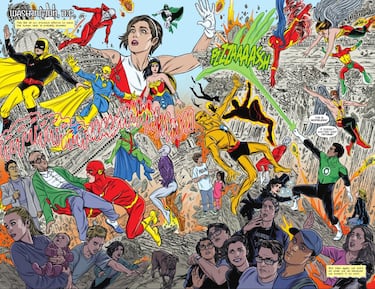
The great crisis
Originally published in 1985, *Crisis* was a limited series written by Marv Wolfman and drawn by George Pérez, which aimed to resolve decades of confusing continuity caused by the coexistence of multiple parallel Earths.
In the story, the Anti-Monitor begins destroying realities, and the Monitor assembles heroes and villains from all worlds to confront him. The event includes iconic moments such as the death of Supergirl and the sacrifice of Barry Allen (The Flash), and culminates in the merging of all worlds into a single Earth, rebooting the DC Universe.
Russell not only pays homage to this event, but reinterprets it from a more intimate perspective. In ‘Space Age’, the crisis is not only multiversal, but existential. Superman fights not only against the Anti-Monitor, but also against the idea that everything he does could be futile in the face of an inevitable destiny. The cosmic threat becomes a metaphor for the human fear of death, oblivion, and insignificance.
The editorial impact of ‘Crisis on Infinite Earths’ was enormous: it redefined the origins of key characters like Superman, Batman, and Wonder Woman, relaunched many series, and established a new continuity that lasted until later events like ‘Infinite Crisis’ and ‘Flashpoint’. Furthermore, it marked the beginning of large-scale crossovers as a narrative and commercial tool.
Russell takes that event and transforms it into a reflection on time, legacy, and responsibility. What’s the point of saving the world if you know it’s doomed? What does it mean to be a hero when the end is already written?

Other heroes and the superhero community
Other icons of the DC universe appear in its pages. Russell focuses particularly on Batman, with a Bruce Wayne who, in addition to being a vigilante, becomes Luthor’s business rival. Key moments are also recounted, such as the creation of the Justice League, the death of Green Lantern, and the team’s rebuilding with new members.
All of this takes place on an alternate Earth, 832654-Z, which respects the official canon, but allows narrative liberties to explore new dimensions of the myth.

The personal plane: parents, love and legacy
One of Russell’s greatest achievements is his treatment of the father figure. Both Nathan Kent and Jor-El play a decisive role in Clark’s development. This Superman constantly questions his motivations and the consequences of his actions. Philosophical reflections, presented as stage directions, permeate the entire work.
Midway through the story, Clark marries Lois Lane and they have a son. But there is also room for sorrow: the death of his Earth father marks one of the comic’s most emotional moments. Everything is tinged with a fatalistic tone, with the certainty of an inexorable destiny.

An artistic marriage: Michael and Laura Allred
The artwork is by Michael Allred, known for his retro style influenced by pop art and comics from the 50s and 60s. His thick lines and use of traditional inking techniques give the work a nostalgic and powerful aesthetic.
The color, fundamental to the visual narrative, is handled by Laura Allred, his wife and frequent collaborator. Together they achieve a unique atmosphere that reinforces the melancholic and reflective tone of the story.
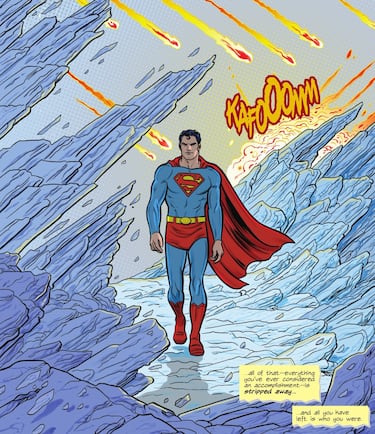
A Superman story with soul
Superman: Space Age is far more than an alternate timeline—it’s a profound reexamination of the Man of Steel. While it revisits the major milestones of Superman’s legacy, its true power lies in placing him on the therapist’s couch, confronting his fears, contradictions, and humanity.
This is essential reading for anyone who craves more than capes and punches. It’s a story with heart, history, and deep reflection—a Superman tale that dares to ask not just what he can do, but why it matters.
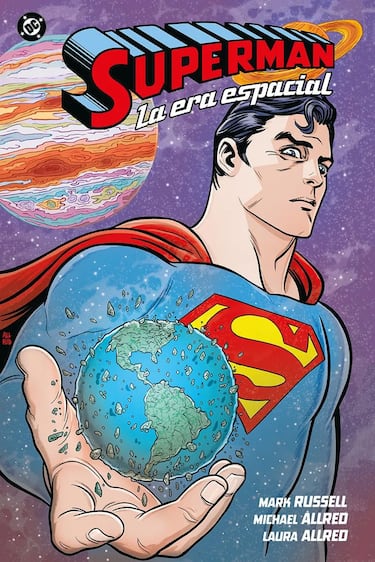
Product details
- Publisher : DC Comics
- Publication date : May 2, 2023
- Language : English
- Print length : 264 pages
- ISBN-10 : 1779518471
- ISBN-13 : 978-1779518477
- Item Weight : 1.34 pounds
- Dimensions : 6.92 x 0.75 x 10.46 inches
Related stories
Get your game on! Whether you’re into NFL touchdowns, NBA buzzer-beaters, world-class soccer goals, or MLB home runs, our app has it all.
Dive into live coverage, expert insights, breaking news, exclusive videos, and more – plus, stay updated on the latest in current affairs and entertainment. Download now for all-access coverage, right at your fingertips – anytime, anywhere.

Complete your personal details to comment